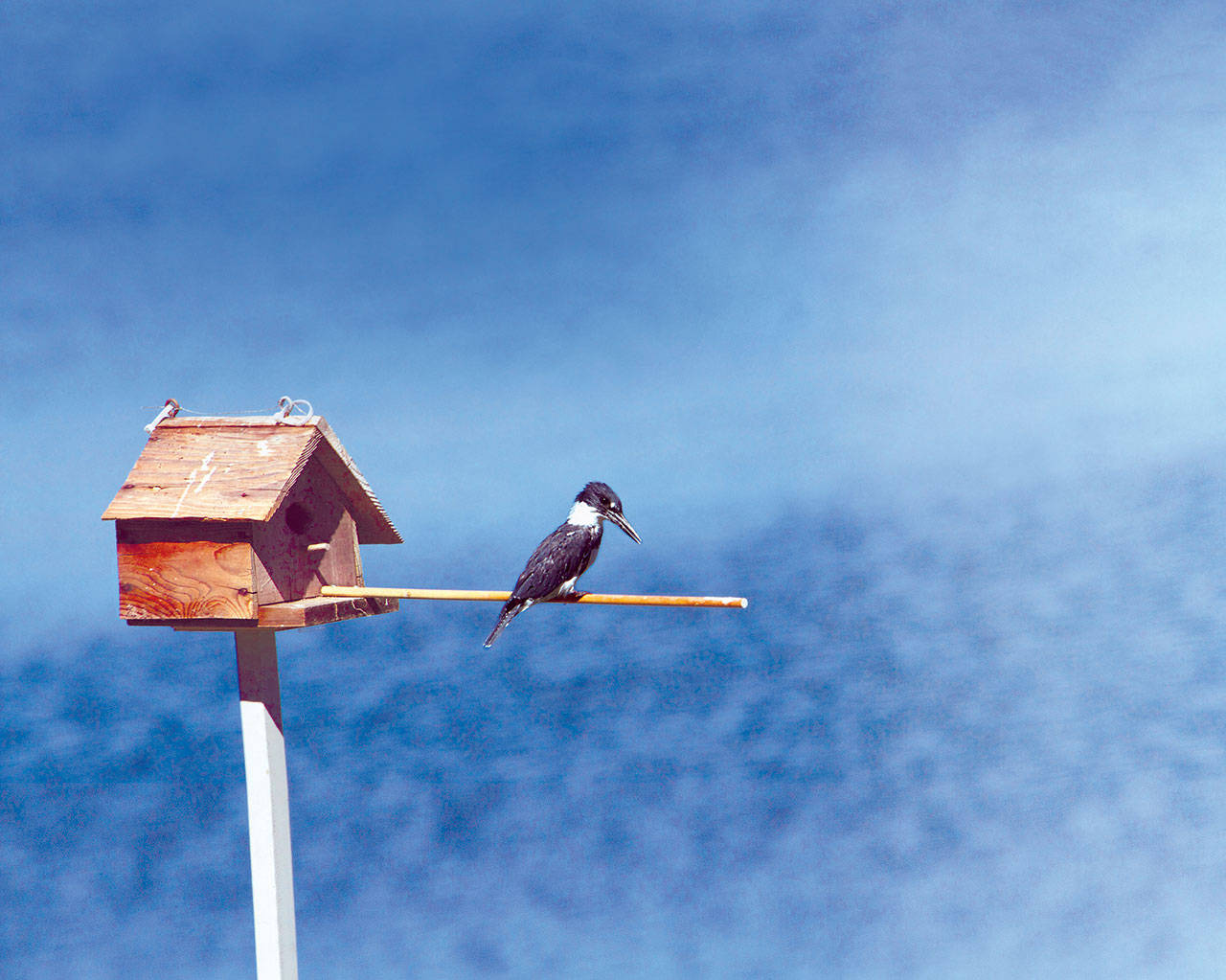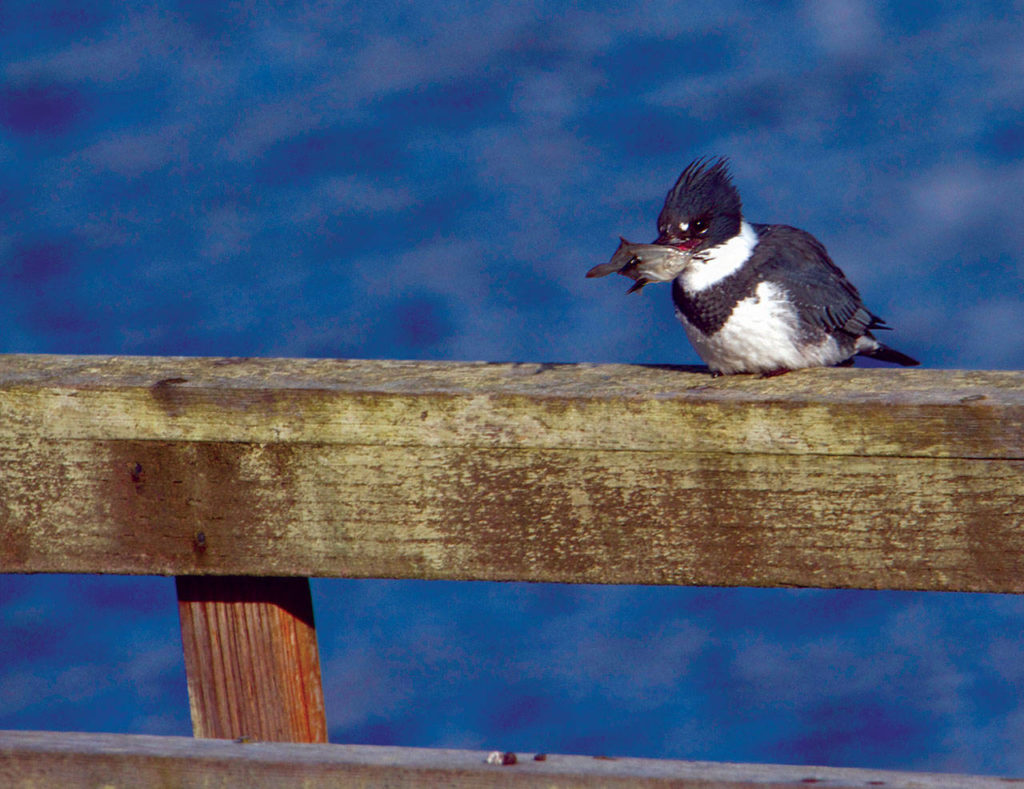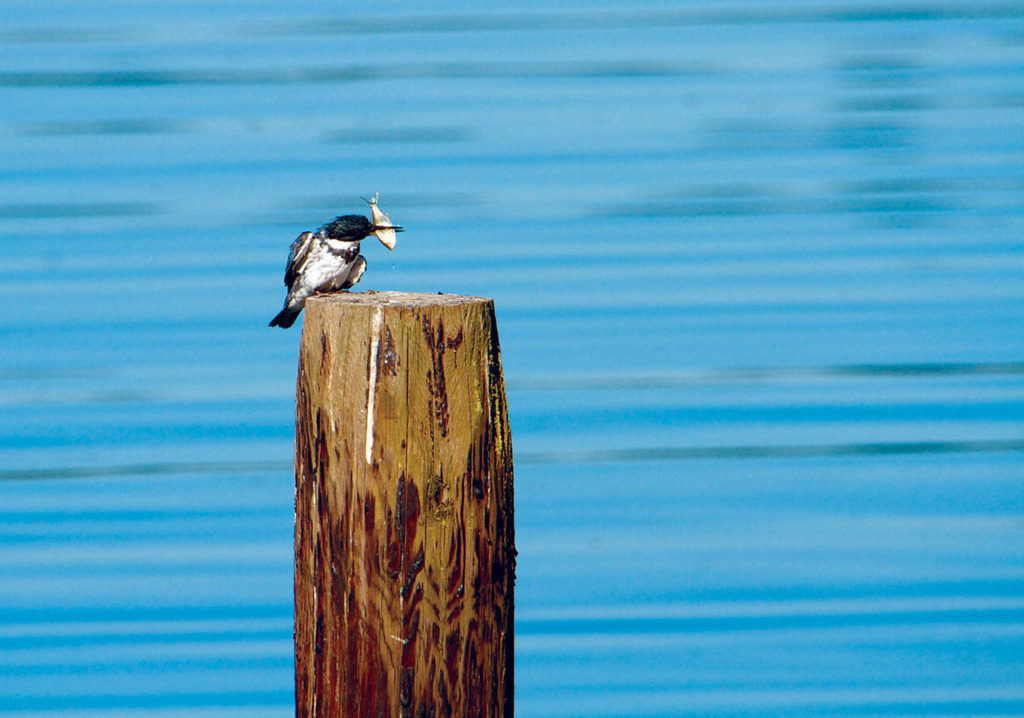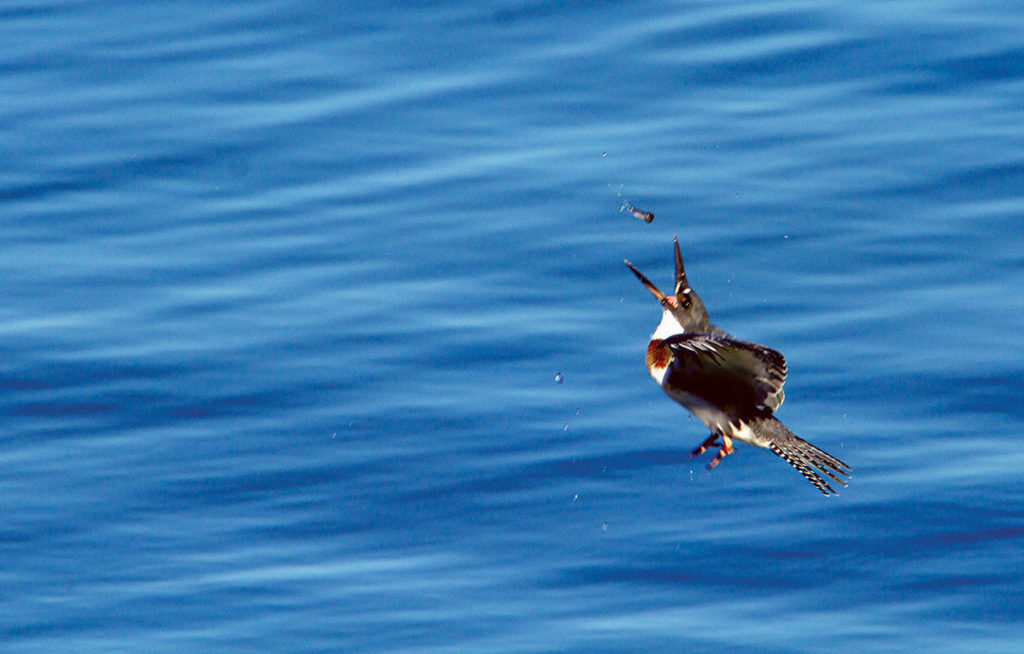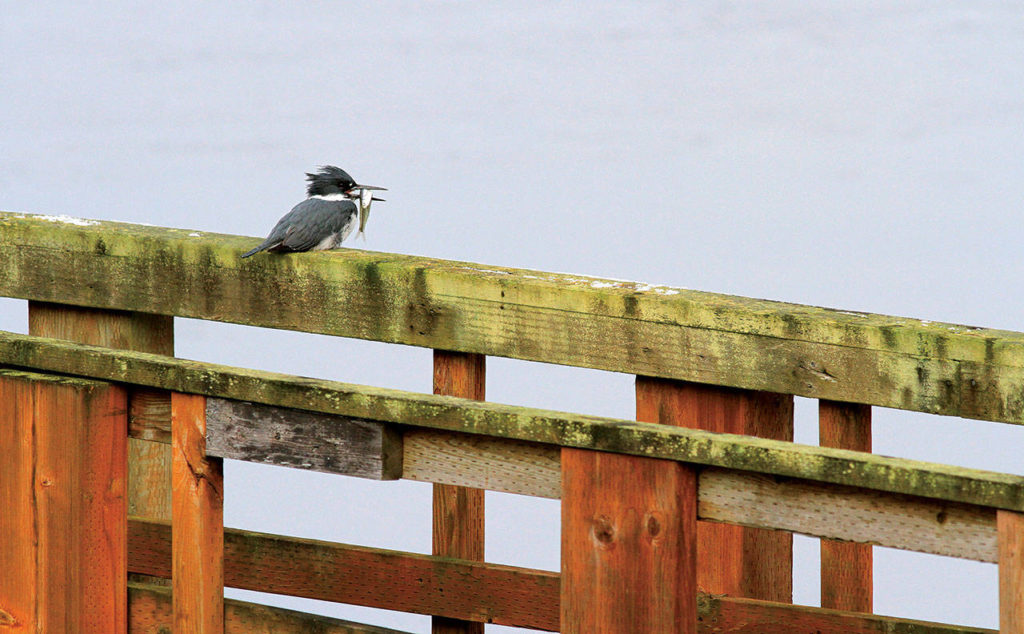Slowly, but surely, the coronavirus is turning me into a birder.
The COVID-19 pandemic keeps me around home most days, and I find a stroll around the neighborhood’s Tulalip Bay is pretty essential to my well-being. Sometimes I take my camera and even my car, which is an effective and comfortable photographic blind.
In recent years, I’ve spent a lot of time photographing birds, including herons and eagles, which spend a lot of time around my home along the bay.
Since the virus has been placing more restrictions on us all, I’ve had more and more fun these days trying to get to know some of my less obvious neighbors.
Belted kingfishers are my latest subject.
As long as there is open water, you should be able to see kingfishers year-round.
The belted kingfisher measures 11 to 14 inches long and weighs about 4 to 6 ounces. Its wingspan is 19 to 23 inches.
Kingfishers are a little hard to get to know because they will fly away pretty fast if you get too close. They also don’t spend much time in any one area, if they don’t find an easy meal.
Docks are popular with kingfishers because there are typically schools of baitfish swimming just under the surface. Kingfishers like to stake out a specific territory, so finding one involves staking out my own spot and waiting for one to show up.
The belted kingfisher, which is depicted on the 1986 series Canadian $5 note, is the type of bird that you hear before you see.
They’ll zip in with their rattling call and plop down on a waterfront snag or piling. Then they start looking carefully at the water below. It usually doesn’t take them long to locate a small fish or crab, which sends them plunging head first into the water after their prey. They also eat amphibians, insects, small mammals and reptiles.
Kingfishers are among more than 500 birds in Washington and have been on the Earth a long, long time. Fossils found in Florida date back some 600,000 years. Some of the oldest found fossils of kingfishers are from some 2 million years ago.
Belted kingfishers have long, heavy, dagger-like black beaks. I watched a kingfisher dive underwater and fly back onto a piling with a fish not held in its beak, but impaled on it.
I’ve seen herons do the same thing, especially with flatfish that lie right on the bottom, but I didn’t know that kingfishers do that, too.
While their heron friends are slow and careful, kingfishers are quick and agile. A medium-sized bird, their long wings make them quick, and they can hover over the water, looking at a fish like a hummingbird eyes a flower.
I once saw a fish break free from a kingfisher’s beak, but then the bird caught it before it dropped back into the water.
While most birds nest in the trees, kingfishers build tunnels in sand and mud banks along the waterfront. The tunnels are up to 8 feet long, sloping upward to keep the five to eight eggs dry in case of flooding. Both the mother and father birds incubate the eggs and feed the hatchlings.
Tulalip Bay is an important ecosystem, and kingfishers are an interesting part of it.
Regular visits around the area are like setting up a bird feeder outside your window, but take a lot less effort. Spend enough time watching the water, and you’ll also see herons wading along the shoreline, stopping occasionally to pluck a wriggling fish from underwater.
And maybe you’ll see something amazing, like the time my neighbor spied a bald eagle breast-stroke to shore with a large Chinook salmon in its talons. The fish was too heavy for the bird to lift skyward.
It was an unexpected payoff from birdwatching, which is already its own reward.
Free bird app
You can get your own bird identification app at audubon.org.
The free app is a field guide to some 800 birds found in North America from the National Audubon Society.
It will help you identify the birds you’re seeing — through things like size, tail shape and color — and learn more about the bird’s behavior.
Washington North Coast Magazine
This article is featured in the fall/winter issue of Washington North Coast Magazine, a supplement of The Daily Herald. Explore Snohomish and Island counties with each quarterly magazine. Each issue is $3.99. Subscribe to receive all four editions for $14 per year. Call 425-339-3200 or go to www.washingtonnorthcoast.com for more information.
Talk to us
> Give us your news tips.
> Send us a letter to the editor.
> More Herald contact information.
